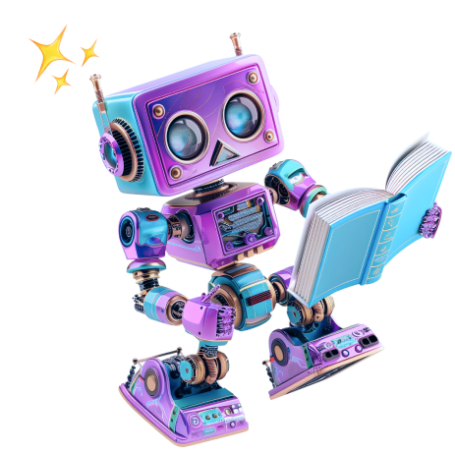Key Takeaways
- Traditional learning builds essential social skills that online environments can’t fully replicate.
- Structured classroom environments help students develop organization and time management skills.
- Direct teacher-student relationships provide personalized guidance and real-time feedback.
- Modern traditional classrooms are evolving to incorporate technology and innovative methods.
- The future of education likely involves thoughtful integration of traditional and digital approaches.
Traditional learning has been the cornerstone of education for centuries. While modern methods have gained popularity, face-to-face learning continues to offer unique advantages for personal and academic growth.
Understanding Traditional Learning
Traditional learning involves:
- Students attending physical classrooms.
- Direct interaction with teachers and peers.
- Structured lessons and hands-on activities.
- Immediate feedback from teachers.
Traditional learning has evolved throughout history while maintaining its core principles of direct instruction and mentorship.
Key Benefits of Traditional Learning
1. Enhanced Social Skills
- Students learn to communicate effectively.
- They collaborate with peers and build relationships.
- They participate in extracurricular activities.
- They develop teamwork, leadership, and conflict resolution skills
2. Structured Learning Environment
- Set schedules help students stay focused.
- Clear expectations develop time management skills.
- Consistent routines reduce stress and anxiety.
- Structured frameworks maximize learning potential.
3. Direct Interaction with Educators
- Students receive real-time feedback.
- They benefit from personalized attention.
- Teachers serve as mentors and role models.
- Face-to-face discussions encourage critical thinking.
These core strengths of traditional learning provide a foundation for comparing different educational approaches. Throughout this article, we’ll evaluate how traditional learning stacks up against online and blended models, examining where each approach excels and where it falls short in order to help educators determine which elements to preserve, adapt, or supplement to optimal learning environments for today’s students.
Traditional vs. Modern Learning Methods
Traditional vs. Online Learning
Traditional Learning Strengths:
- More immersive, interactive, and community-focused.
- Immediate clarification and feedback.
- Hands-on activities and physical resources.
- Real-time discussions and social development.
Online Learning Strengths:
- Greater flexibility in time and location.
- Self-paced learning options.
- Access to global resources and experts.
- Digital literacy development.
- Often more cost-effective.
- Accommodates different learning styles development.
Both approaches offer distinct advantages for today’s learners. Traditional learning excels in building social skills and providing immediate human connection, while online learning offers unprecedented access and flexibility. The ideal choice often depends on individual student needs, available resources, and specific learning objectives.
Traditional vs. Blended Learning
Traditional-Only Approach:
- Consistent structure and routines.
- Strong in-person community building.
- Direct supervision and guidance.
- Less dependent on technology access.
Blended Learning Advantages:
- Combines strengths of both traditional and online methods.
- Allows for personalization through self-paced modules.
- Technology enhances rather than replaces face-to-face teaching.
- Students develop both digital and interpersonal skills.
- Provides flexibility while maintaining structure.
- Better prepares students for technology-driven workplaces.
Many educators are finding that blended learning represents an optimal middle ground, preserving the irreplaceable aspects of in-person learning while embracing technology’s benefits. This approach recognizes that education isn’t about choosing between traditional and digital methods, but rather finding the right integration of both to serve diverse student populations and learning goals.
Adapting Traditional Learning for Today
Modern traditional classrooms now incorporate:
- Innovative teaching techniques.
- Digital resources and technology.
- Project-based learning approaches.
- Critical thinking and problem-solving focus.
This evolution of traditional learning maintains its core strengths while addressing contemporary needs. By thoughtfully integrating modern elements, educators create more engaging and relevant learning experiences without sacrificing the human connection that makes traditional education valuable. Students benefit from having the best of both worlds—the structured support and social development of traditional settings enhanced by the tools and approaches that prepare them for today’s rapidly changing world.
Common criticisms and solutions
Limited accessibility → Technology integration
Traditional classrooms have sometimes excluded students with physical limitations, geographic constraints, or scheduling conflicts. By integrating technology like recorded lectures, virtual participation options, and digital materials, schools can make traditional learning accessible to more students without sacrificing quality. This hybrid approach ensures that students who cannot always be physically present still benefit from the traditional learning experience.
Rigid structures → Diverse teaching methods
Critics often point to inflexible schedules and standardized approaches as limitations of traditional learning. Modern educators are responding by incorporating diverse teaching methods that accommodate different learning styles while maintaining structure. This includes rotation models where students cycle through different stations, flexible seating arrangements, and varying instruction techniques (visual, auditory, kinesthetic) within the same lesson to engage all learners.
One-size-fits-all approach → Personalized learning plans
Traditional education has been criticized for treating all students the same despite their different abilities, interests, and backgrounds. Today’s traditional classrooms increasingly incorporate personalized learning plans that set individual goals while maintaining classroom cohesion. Teachers use data from assessments to tailor assignments, offer choice in demonstrating knowledge, and provide targeted support, ensuring each student is appropriately challenged within the traditional framework.
Effective strategies:
- Active participation in class discussions.
- Collaborative projects.
- Project-based learning.
- Engagement with additional resources.
- Growth mindset and lifelong learning.
The Future of Traditional Learning
Despite digital advances, traditional learning remains vital because:
- Human connection is irreplaceable.
- In-person collaboration builds essential skills.
- Face-to-face interaction creates supportive communities.
- Direct mentorship shapes academic and personal growth.
Traditional learning continues to evolve while providing comprehensive education that prepares well-rounded individuals for tomorrow’s challenges.
In Summary
Traditional learning remains relevant and valuable in today’s educational landscape by offering irreplaceable human connections and structured environments. It develops crucial social skills, provides helpful structure, and enables meaningful relationships with educators.
As education evolves, traditional methods continue adapting by incorporating technology and innovative approaches while maintaining their core strengths. This balanced approach prepares students not just academically but also socially and emotionally for future challenges.
Keep Reading!

Looking for a fresh way to engage young learners?
Bring learning to life with story-based custom lesson plans you can build in minutes!




